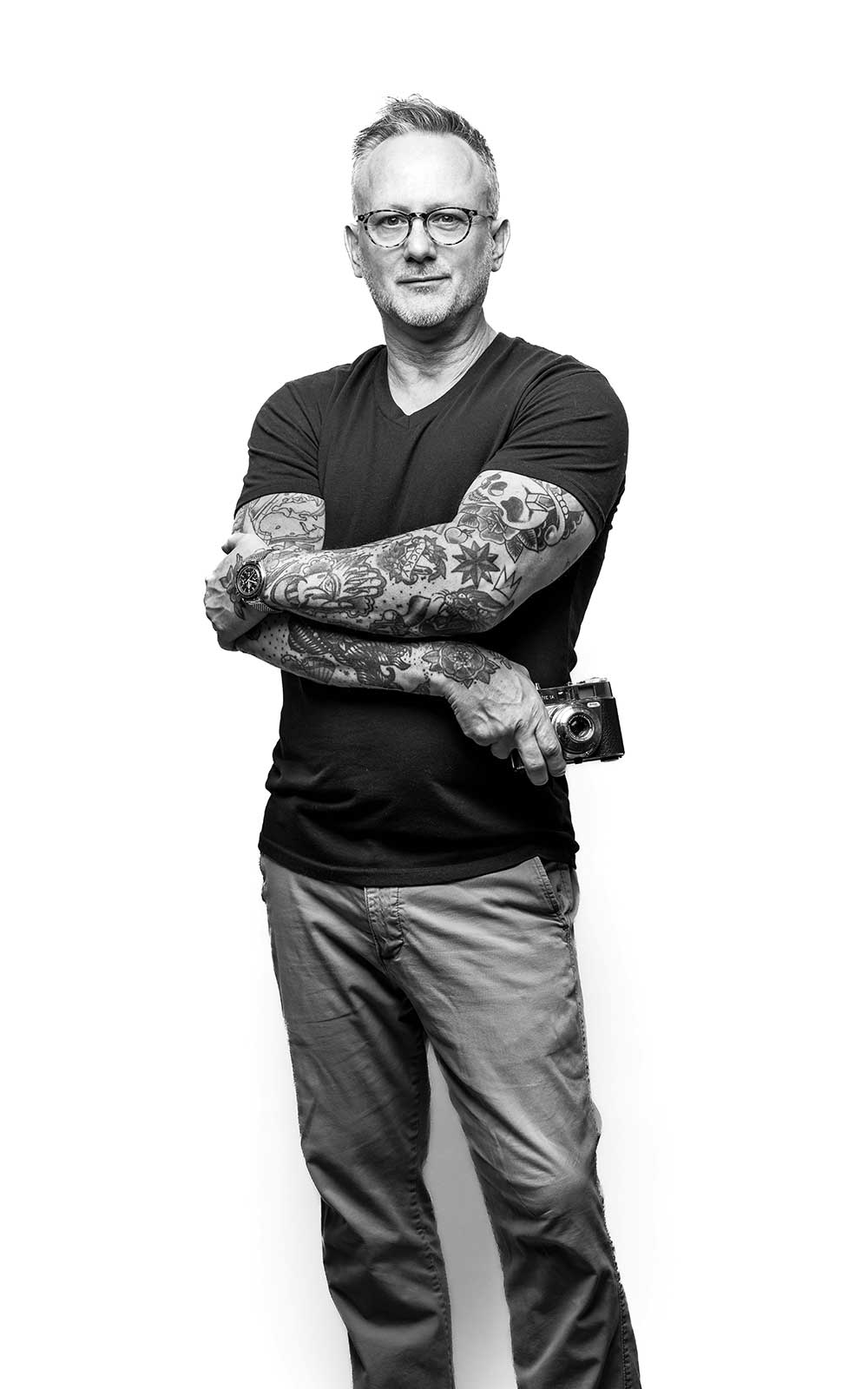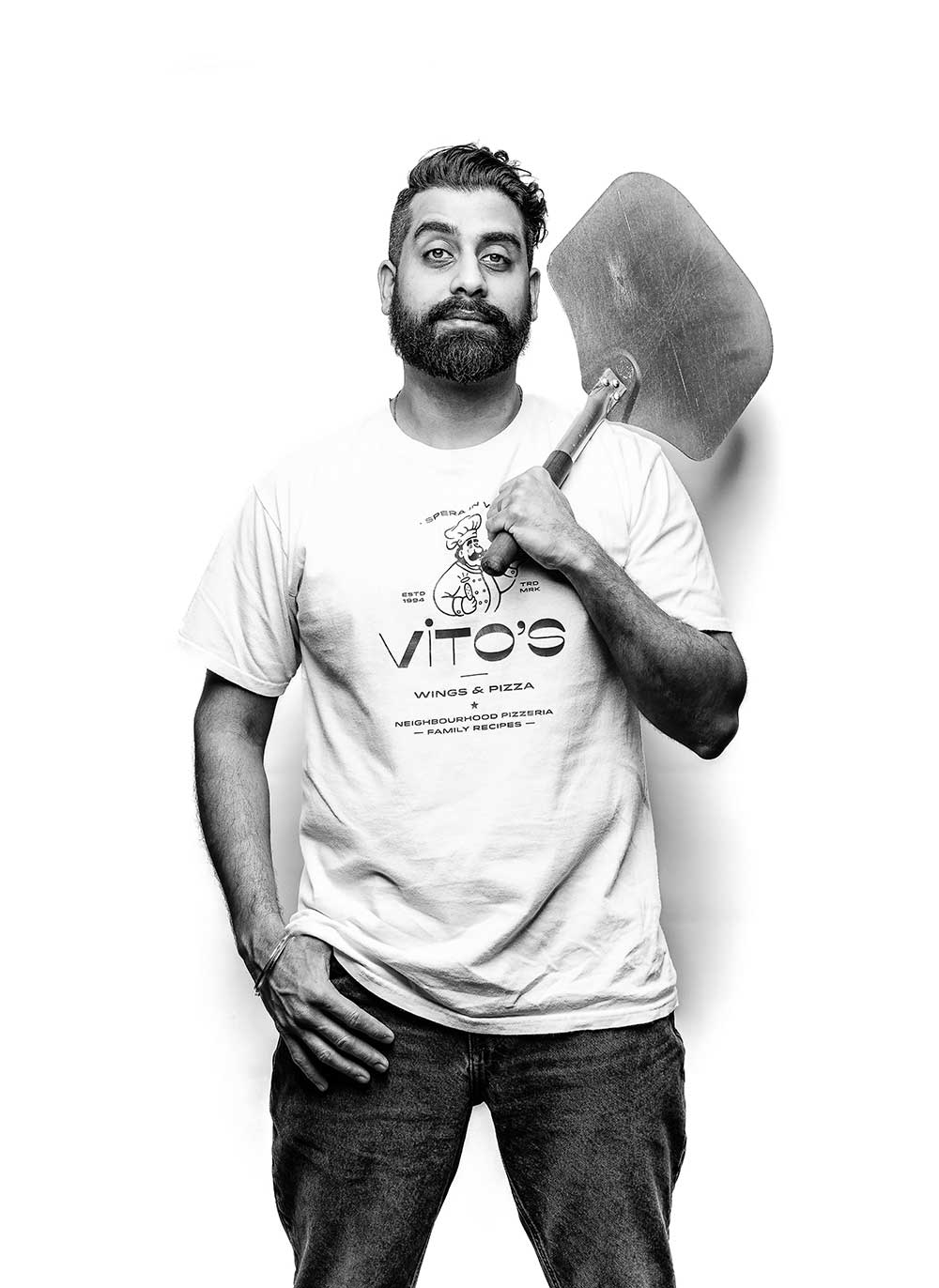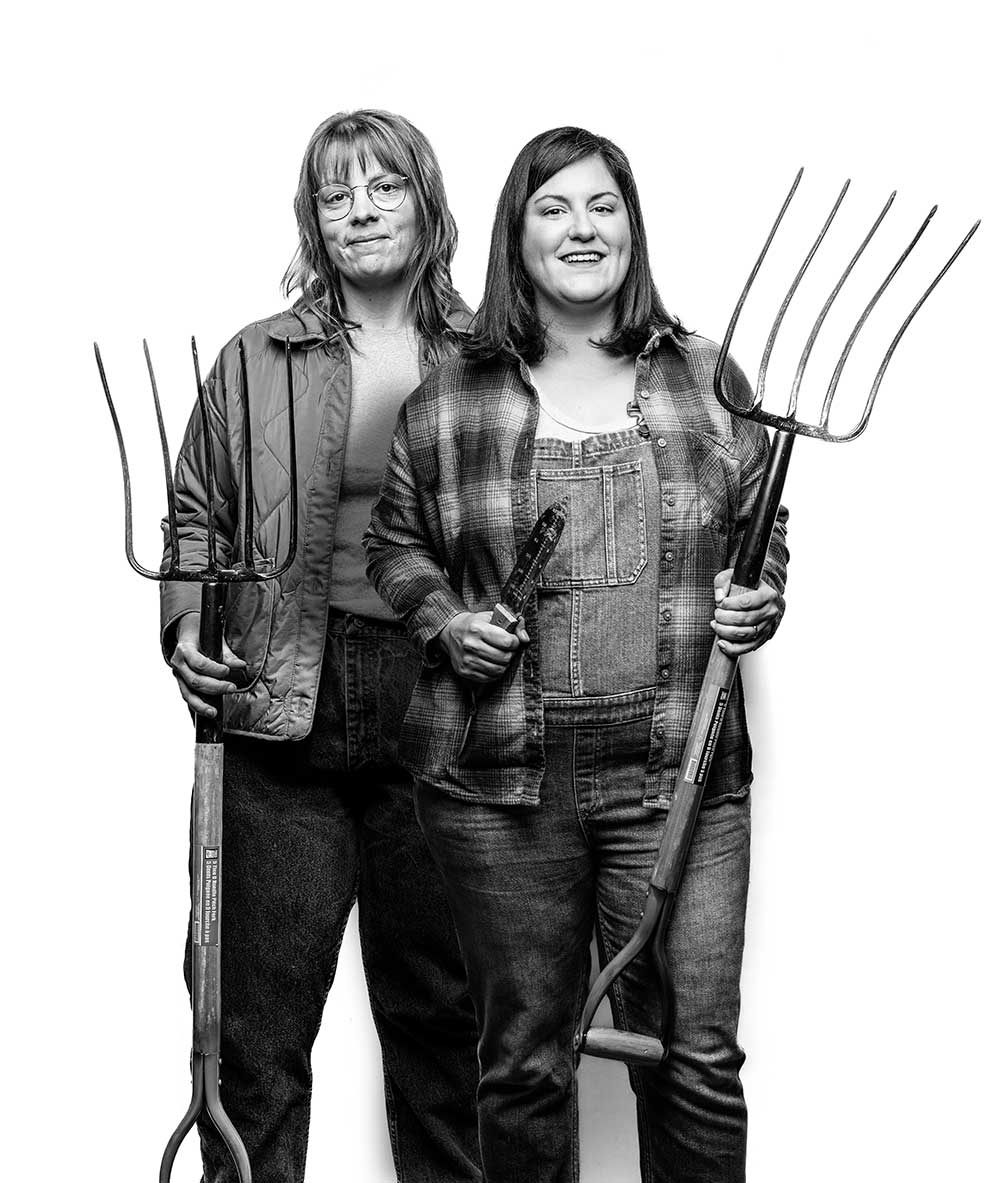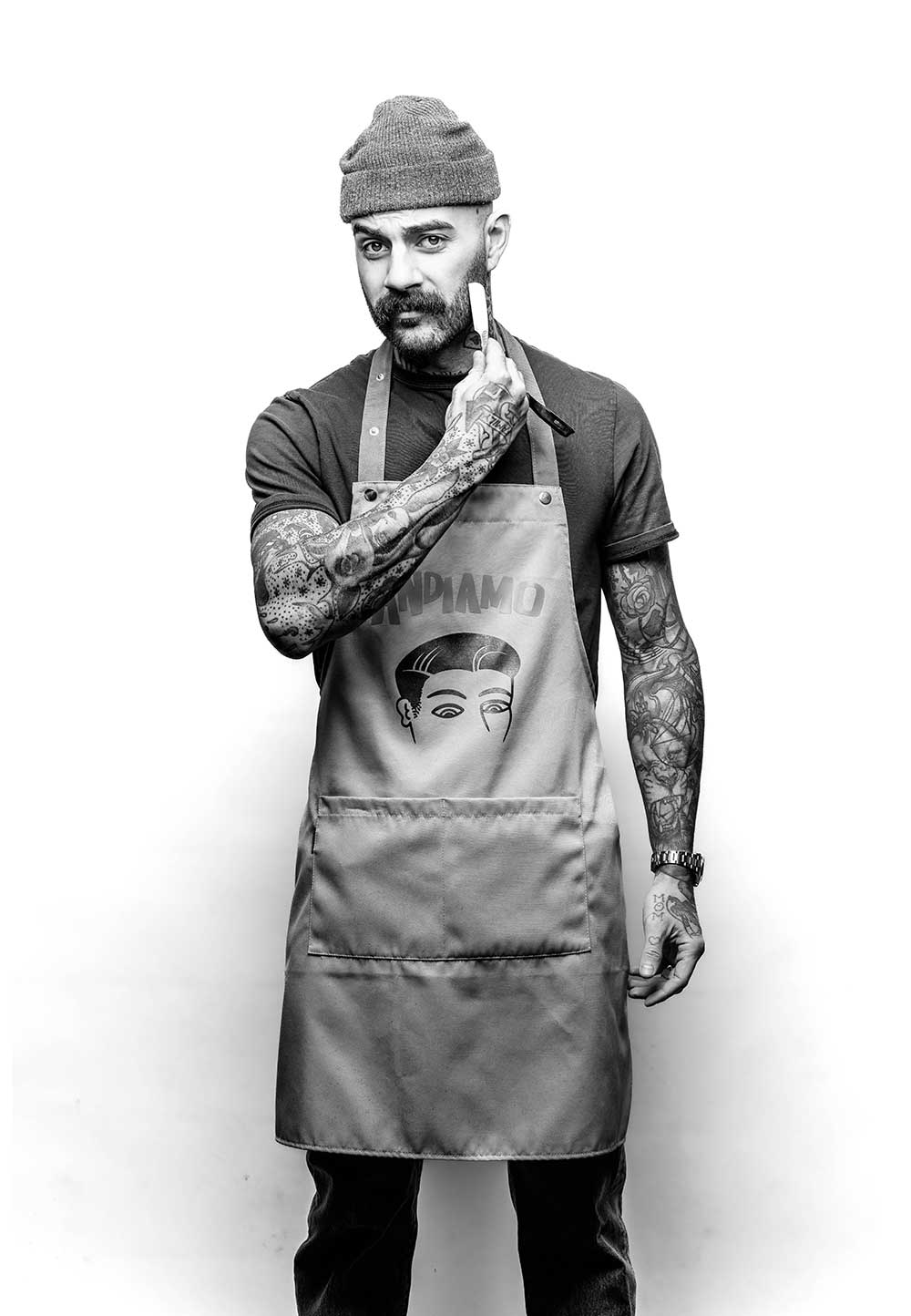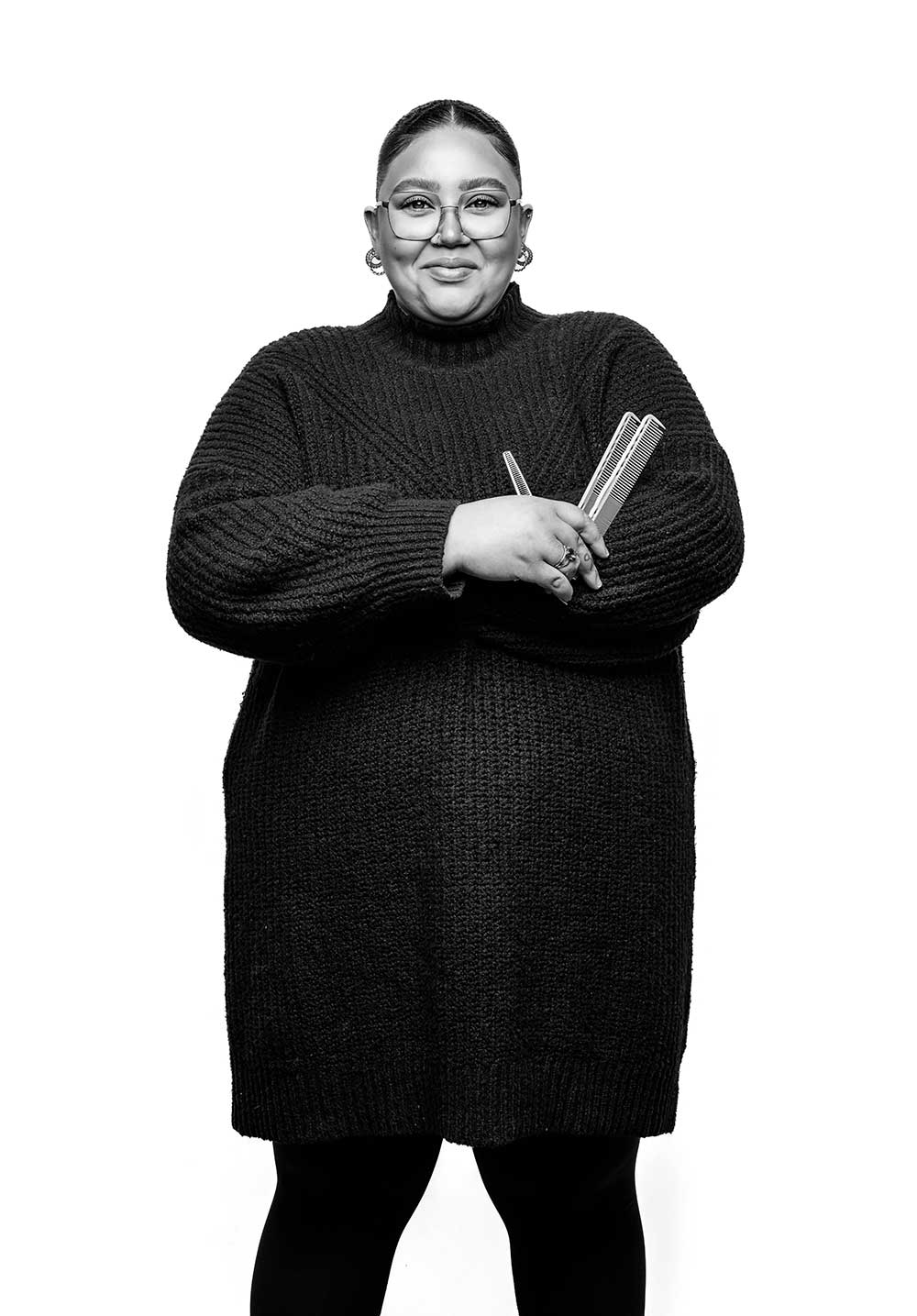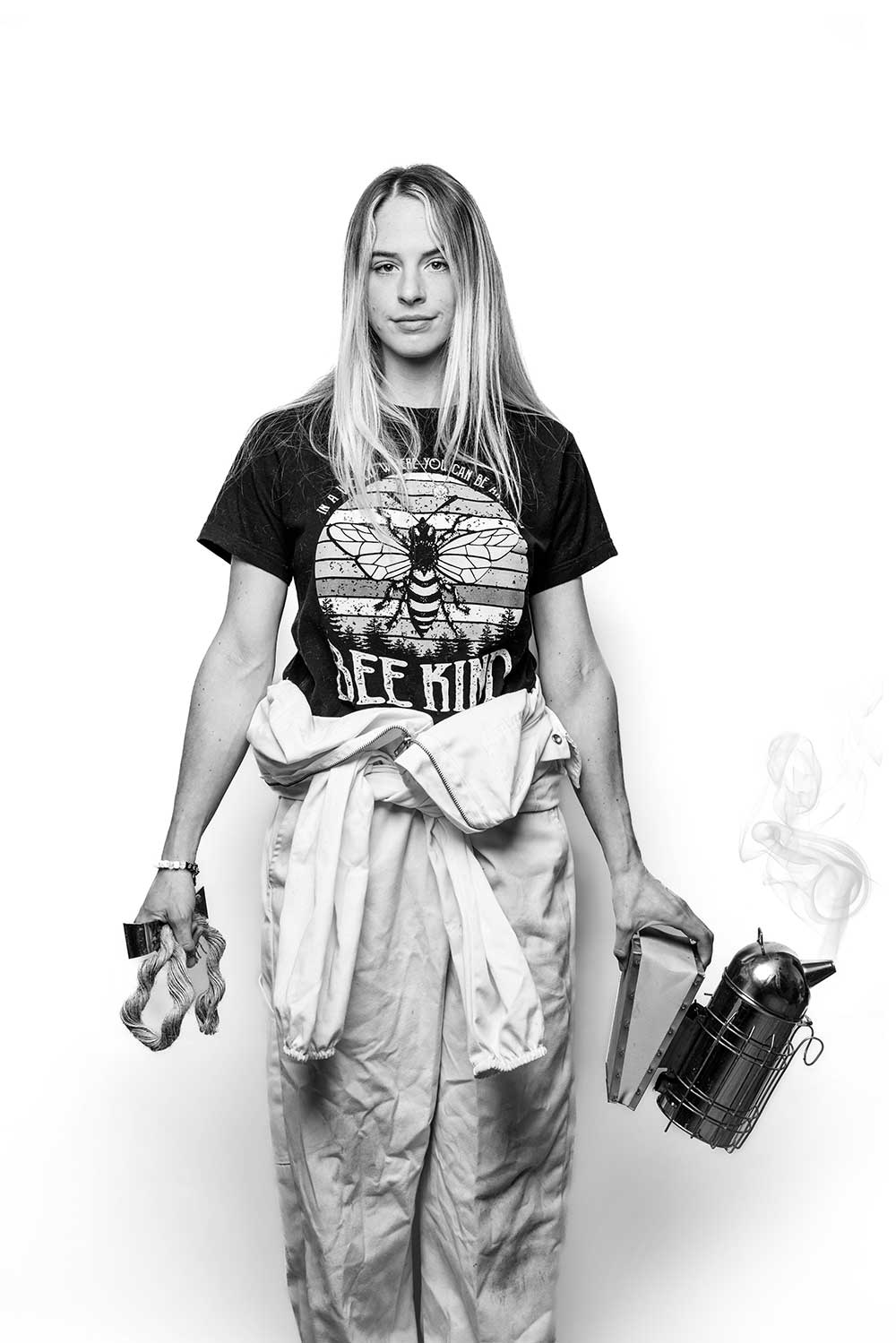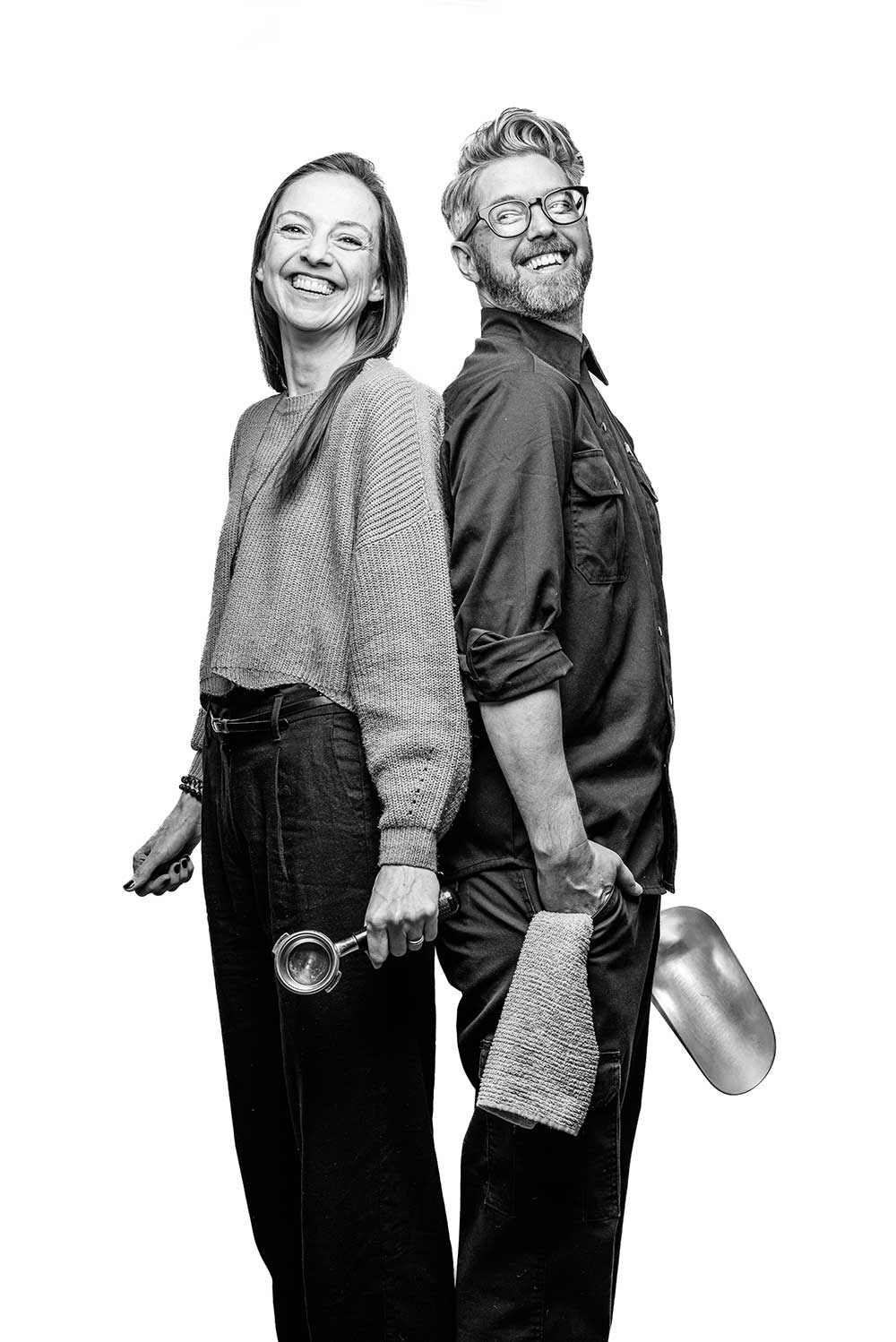We are pleased to present a photographer whose artistic vision challenges the boundaries of the technological era: Ian Ross Pettigrew. With over 25 years of experience as an Art Director, Ian has delved deeply into the intersection of traditional craftsmanship and technological advancement in his most recent project, (Hand)Made Hamilton.
In a time where artificial intelligence and automation are at the forefront, Ian invites us to reflect with a provocative question: Can machines truly replace the art and skill of human hands? Through (Hand)Made Hamilton, Ian sheds light on the invaluable value of artisans who keep alive traditional and non-mechanized practices.
This project encompasses a wide range of artisans, from barbers and tattoo artists to butchers, bakers, goldsmiths, and carpenters. Each of them possesses a deep-rooted passion for their craft and a hands-on approach that allows them to create unique and exceptional works. With (Hand)Made Hamilton, Ian seeks not only to showcase their talent and dedication but also to foster appreciation for their art and inspire others to discover the power of their own hands.
More than a book, (Hand)Made Hamilton is a celebration of the city of Hamilton and the artisans who infuse soul into their craft, thus preserving the heritage of traditional trades. Today, Ian will offer us a unique perspective through his photography, reflecting the passion, dedication, and profound impact these artisans have on Hamilton’s cultural fabric. Join us in this interview as we explore the world of (Hand)Made Hamilton and discover the stories of the artisans contributing to the city’s rich craft heritage. [Official Website]
Your latest project, (Hand)Made Hamilton, explores the enduring value of artisans and their traditional trades in an age dominated by technology and automation. What inspired you to embark on this project and shine a spotlight on the artistry of human hands in our modern world?
It had been a while since I last undertook a book project, quite a few years actually. I like to make sure that if i’m going to pour myself into something it has to be meaningful and worthwhile. Basically the inspiration – the catalyst – was the rapid rise of a.i in our creative world, which is especially affecting photographers. I’ve always thought that the photographer’s most important tool is the creative eye. Now factor in a.i to this equation of rapidly advancing tech… and how might that also affect other professions. Can artificial intelligence ever be able to replicate the thought process and the passion that goes into making a new flavour beer? Or a haircut? Or to this conversation a great photograph. Are some of these trades actually threatened by a.i? Will we one day have robot tattoo artists?
In your book, you cover a wide spectrum of artisans, from barbers and tattoo artists to butchers, bakers, goldsmiths, and carpenters. Can you share some insights into what you discovered about these individuals and their dedication to their craft during the making of (Hand)Made Hamilton?
One thing technology and automation will never be able to replicate is passion. All the artisans in my book are doing what they do because the absolutely love it, simple as that. Combine passion with skilled craftsmanship, and you get products that can never be automated. Many of the people in the book came from other professions – some from very well-paying, but ultimately soul-crushing careers. So they made a choice, and many a very brave, bold choice. Give up this cushy, well-paid career to open up a brewery. Or a pizza joint. Whatever they ended up doing they all did with so much passion. It’s the same passion I put into my photography, so I can recognise when it’s genuine. When you chat with someone who is so passionate about what they create, its infectious. It motivates you. You don’t get that from someone sitting in a cubicle. And a lot of the people started their businesses just before or even during the pandemic. Some moved from other cities to come to Hamilton. I think this infectious positivity attracts others of the same mindset.
The title, (Hand)Made Hamilton, suggests a close connection between the artisans and the city itself. How do you see the artisans contributing to the cultural fabric of Hamilton, and what role do they play in shaping the identity of the city?
Like my Shakespeare quote in the book, ‘What is the city but the people?” Hamilton is made and shaped by the inhabitants, like all great cities. Hamilton is a city thats had a very rough go in the last 20-30 years. It was a city pretty much based on a single industry, steel. But when that started to go, Hamilton took years to reinvent itself. Artists, and thus artisans, truly help shape neighbourhoods and give life and vibrancy to a city. So when all the artisans were pretty much forced out of Toronto many just headed an hour west to Hamilton. Now the city has garnered itself a reputation for having such a vibrant arts & culture. The restaurant scene is booming, the music scene is great. The artistic scene is thriving. I wanted to feature this and celebrate it for Hamilton. It takes a lot for a city to reinvent itself. But Hamilton is accomplishing it.
Your background as an Art Director for over 25 years brings a unique perspective to your photography. Can you tell us how this experience has influenced your approach to capturing the essence of the artisans and their work in (Hand)Made Hamilton?
I take my talents as an Art Director and apply that to all of my photographic work. I see all my work as “design” first, i don’t necessarily see it as a photograph. How its lit, how the posing is, how various elements are working in the overall composure. I see things through the eyes of a designer first. There are some great artists in the book as well, and maybe they see things in a similar way. Being an artist is always a duality: there is of course the creative, talent aspect. But there is also the technical aspect as well. Painter, sculptor, photographer, tattoo artist, chef… a great artist has both. I think a lot of the people in the book have both. Thats what sets them apart as being truly great artisans. As an Art Director you’re basically the arbiter of good taste – you decide the colour, the fonts, the layout, etc. All magazines and newspapers have photo editors, they are the same thing. Basically its being able to tell Good from Bad. So from this experience as an Art Director I think I can relate to the artisans featured in the book.
(Hand)Made Hamilton is not your first self-published book; you’ve previously worked on projects related to adults living with Cystic Fibrosis. How does this latest project differ from your previous works, and what message or impact do you hope to achieve with this new collection?
The books about cystic fibrosis were very heavy in nature. Mentally, physically, financially. Those books took a huge toll. I’m proud of what they accomplished – shining a light on a hardly talked about topic. I’ll use my SaltyGirls book as an example. There were 72 women in the book, and since its release 22 of those women have died. Thats a heavy toll. So for my next project I wanted something that was way more lighthearted and celebratory. I had actually started another project back in 2018 taking photos of aging War Veterans, but for a variety of reasons the project never fully gained steam. And then the pandemic hit and stopped work on pretty much everything. But I noticed the influx of people coming to Hamilton, and others here making a real impact, creatively. The message for the book is pretty clear: Hamilton is a vibrant hub of artisans that are doing some pretty amazing things.
As both an Art Director and a photographer, you’ve had the opportunity to work with many talented individuals. Are there specific photographers or creative minds who have significantly influenced your artistic journey and the way you approach photography?
Everyone along your path in life could be somewhat of an influence. I take inspiration from some of my favourite photographers like Richard Avedon and Herb Ritts. Avedon’s American West is an obvious influence on this specific project. I also love the sheer scale of the work Gregory Crewdson does, especially his new work Eveningside. I get influenced by others designers. I get influenced by typography. I especially get influenced by cinematographers. I’ll go watch a movie just because Roger Deakins lensed it. I’m that geeky. I’ve had other people in my past that have also influenced me in various ways. As a young Art Director in the 90s, I worked with lots of very established photographers and just thought it was so cool. We were shooting everything on medium format film back then too, it was very much a different time in terms of skill set, and planning. One of my old bosses, Alan Gee, was a big influence. Taught me how to be very meticulous and uncompromising, but also not to forget to have fun.
Your statement about the importance of having a great eye as a photographer resonates strongly. Can you share any advice or insights for aspiring photographers who are looking to develop their creative vision and infuse soul and meaning into their work?
Thats a tough one. I always thought that can come down to Nature or Nuture. From a technical point, basic photography skills are pretty easy to learn. And even easier now with modern cameras and smartphones. So if your photos are shit, is it technical or creative? If its technical, that can be fixed. If its creative, having that great eye, can that be taught? I don’t know. I think photographers should be not just studying other great photographers, but also artists. Study Rembrandt. Study Andreas Gursky and Cindy Sherman. Absorb everything. You never know where an idea can come from. I always thought the best AND worst part about being an artist is that ANYONE can call themselves an artist. Its a double-edged sword – as an artist you have to stick with your creative vision, but the flip side of that is are you really even any good? Just because you think its a good idea, doesn’t mean its actually a good idea. To give your work soul you have to be genuine. People will be able to tell when your bullshitting. So all you can do is try, and if you fail just don’t give up. The only real failure is when you stop trying.
(Hand)Made Hamilton is a celebration of creativity and craftsmanship. Can you give us a glimpse of what readers and viewers can expect from the book, both visually and in terms of the stories it tells about the artisans and the city of Hamilton?
It was important to try to gather a fairly well-rounded assortment of people. But I was also very picky and had some stipulations. You had to be making something artisinal – something cool – with your hands. Could be food. Could be stained glass. I had lots of people contact me that just didn’t fit into this criteria. The stories from the artisans vary, some very in-depth and personal, others very business-like. But each having a great story of artistic freedom and perseverance. Visually I wanted black and white from the get go. Its honest, impactful, visually striking. I took influence from Avedon’s portrait work as well as Platon’s portraits. Such a raw honesty in those.
Beyond (Hand)Made Hamilton, do you have any upcoming projects or areas of exploration that you’re excited to pursue in your photography and art direction career?
The projects I do just kind of happen naturally. I try not to force anything, or it won’t be enjoyable. I had started that project after the Cystic Fibrosis books, about aging war veterans. Then everything got shelved until after the pandemic. The reception for (Hand)Made Hamilton was overwhelmingly positive, so there’s the outside chance I may do a sequel. I know there were many people who could have been in the book and missed their chance. I might broaden it a bit too and include people I may not have considered the first time around. I’m a portrait photographer, so my focus is always something about people. But anything can change and something different can come up. Next year (2024) will also be the 10 year anniversary since my first cystic fibrosis book, so there’s also a chance I may do something – on a much smaller scale – for that. Lately I have been busy on both commercial photography assignments as well as running my advertising agency.
Finally, what message or lasting impression do you hope readers and viewers take away from (Hand)Made Hamilton, and how do you see the role of artisans evolving in our ever-changing world?
Ultimately, the final message ended up being was “Come check out Hamilton and all the vibrant artisans that help make this city great”. So it ended up as a mix of a love letter to the city, combined with a Tourism Hamilton map. Hamilton has always had a rough reputation, especially being so close to Toronto. But Toronto has become a gentrified, antiseptic humdrum. Starting especially in the 1990s when artist’s were all getting pushed out of Toronto during the start of the condo boom. Hamilton is the new cool destination. And we have the artisans to prove it. And as we have seen in the last few months especially with a.i more in the news – and a.i was a huge sticking point with the Hollywood strikes – i think artisans are more important than ever. I think part of me is a Luddite, and i’ve developed an aversion to overly-technical things. Or maybe its more like an aversion to technology just for the sake of it. I’ve always loved the line from Jurassic park, “Your scientists were so preoccupied with whether or not they COULD, they didn’t stop to think if they SHOULD.” That pretty much sums up a lot of today. Sometimes the best way to do things is still by getting your hands dirty. Thats why these artisans are so important.



